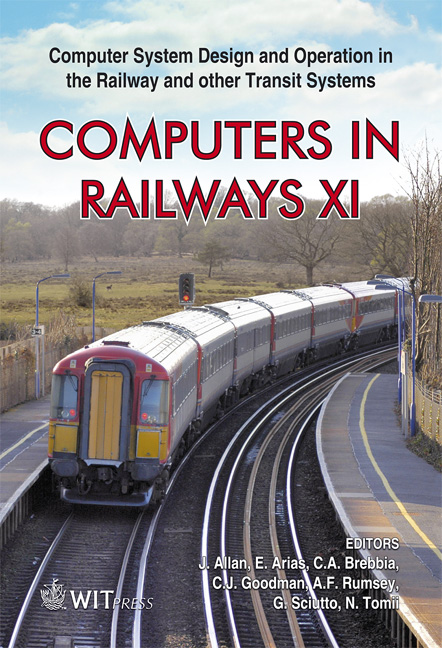Analysis Of Braking Performance For The Definition Of Emergency Braking Intervention In ATP Systems
Price
Free (open access)
Transaction
Volume
103
Pages
10
Page Range
273 - 282
Published
2008
Size
444 kb
Paper DOI
10.2495/CR080281
Copyright
WIT Press
Author(s)
M. Malvezzi, F. Bartolini, M. Rinchi & A. Rindi
Abstract
A traffic management system is generally based on a set of supervision curves relating the permitted velocity of the train to the running distance, in order to ensure the respect of speed restrictions on the line by intervention of an emergency braking in case of train velocity exceeding the permitted one. The basic braking model defines a deceleration profile, which represents the train nominal braking performance, used to determine the stopping distance and to compare it with the available distance. This deceleration profile value has to be reduced using properly defined safety coefficients. The paper describes the method that allows one to calculate the safety coefficient as a function of the safety target (in terms of probability of failure). The method is based on the braking performance probability distribution estimation, expressed as the ratio between the real and the nominal deceleration. This study permits one to evaluate the probability that the real deceleration is smaller than the one used in the basic braking model and then that the real stopping distance is longer than the one calculated by the braking model. This model can then be used to tune the value of the safety margin in order to obtain a certain probability of system failure. The numerical procedure used to simulate the braking performance is based on the Monte Carlo method, which is a method for iteratively evaluating a deterministic model using sets of random numbers as inputs. This method is often used when the model is complex, nonlinear, or involves several parameters. Keywords: deceleration distribution, Monte Carlo, safety margins.
Keywords
deceleration distribution, Monte Carlo, safety margins.





